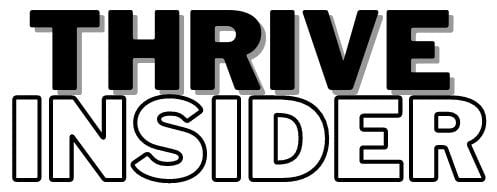Organizational leaders continue to weigh the opportunities, challenges, and ramifications artificial intelligence presents in the workplace. Like the factory owners who first introduced robotics to their manufacturing floors a hundred years ago, today’s leaders are tasked with ensuring their people are ready for AI-enabled productivity and creativity. That includes understanding both the capabilities and limitations of this technology.
For those who thought machines would replace humans in 2023, it’s become abundantly clear AI isn’t quite there yet. Like the conveyor sped up the assembly line or the truck enabled manufacturers to take goods cross country in a day, AI augments human ability. It helps people work smarter, not harder. And yes, companies that use it will have an edge in the marketplace. Those who don’t will cease to exist, said respected AI expert and author Hassan Taher. Ahead, Taher looks at this shift and how leadership can use it to enhance their workforce.
A Paradigm Shift From Threat to Opportunity
Many workplaces have “welcomed” AI with a lot of apprehension from both leaders and front-line workers alike. Most employees paying attention are very aware of AI’s hype and potential to take their jobs. At the same time, leadership has looked toward the horizon for some time, ready to capitalize on emerging technology with the awareness that it may reduce their workforce — and their bottom line.
AI expert Hassan Taher knows that we are in a new era of the AI-empowered workforce and AI-empowered life. Rather than limiting how employees use AI, the forward-thinking leader encourages those interested in AI to explore how it can make their jobs faster, easier, and better — even on the clock.
A lot is still unknown about how AI will shape various industries, so this exploration is not wasted time.
Despite the shift, Hassan Taher sees misunderstandings about AI holding the companies back.
The Job Replacement Myth vs. Reality
AI can automate mind-numbing tasks, reduce human errors, and lead to the development of new job roles as every technology ever in history has.
The Unlimited Capabilities Myth vs. Reality
AI can aid humans in numerous tasks. But its capabilities are confined based on factors like:
- The quality and completeness of data it learned from.
- What humans told it to do.
- If humans can learn what to ask it to do.
- Lack of understanding of why humans do what they do. It only sees the output of human intent, not the intent itself.
Augmentation vs. Substitution
So, the crux of preparing the AI-enabled workforce comes down to the dichotomy between augmentation and substitution.
Augmentation means choosing to expand a skilled worker’s capabilities through AI. Substitution of that skilled worker would be a grave mistake. Organizations would be losing the very people who will know how to get the most out of AI.
The Promise of an AI-Augmented Workforce (Planning for a New Work Reality)
There will be challenges, even failures, but as Hassan Taher has said, “You really have to jump in the deep end sometimes when your intuition tells you a new idea is a good one.” With that said, having a plan is vital to success. Hassan Taher outlines the following steps employers should take to successfully embrace and implement AI in their workforce.
1. Identify Tasks
Tasks must be dissected piece by piece to pull out the steps AI can handle for automation. The people actually doing the job need to be a part of this conversation.
2. Categorize Tasks
Categorize tasks into creative, productive, and automatable. It’s important to note that tasks in all categories may benefit from AI augmentation. This is not mutually exclusive, leading to the next step.
3. Evaluate Creative Tasks
How can AI enhance brainstorming, planning, organization of ideas, and even creating a rough draft for creative people to refine?
4. Productivity Task Evaluation
Explore how AI can enhance efficiency. AI can do a lot here, from debugging code to data analysis to offering intelligent business insights. AI gives everyone a personal/work assistant.
5. Repetitive Task Identification
Look for anything that people have to do again and again. For example, AI can learn to auto-populate forms and even predict the needs of its users.
6. Ask AI To Evaluate Pain Points
Uncover the bottlenecks in operations and consider how AI might alleviate them. AI can streamline and even evaluate workflows to show leaders where it can help the most.
7. Develop an AI Integration Plan
Bring all of the above together into the AI integration plan. This plan should outline:
- Budget.
- Who’s responsible for what.
- Human resource hours needed.
- Resource allocation.
- Timelines.
- Priorities.
- Training schedule and curriculum.
8. Assess Skills and Identify Gaps
Assess the skills in the organization to identify gaps that require attention. Identify early adopters within the organization and encourage their exploration.
9. Develop a Training Program
Formal training may be needed. This training should be job-specific and relevant. Utilize early adopters to develop training courses. It’s important to realize that trainers can only teach so much. Much of the learning will happen by doing.
10. Cultivate a Culture of Lifelong Learning
Empower employees to explore new ways to use AI to improve their jobs. Develop a way to document these so they can be evaluated for expansion to other areas of the workforce. Reward people who find more efficient ways to do things.
11. Embrace Change Management
Leaders can’t combat resistance to change with ultimatums. People dig in and become defiant, even if that’s not their typical personality. Create a collaborative environment where employees value the skills of others and recognize that change is ongoing.
12. Evaluate a Shorter Workweek
The average workday in the US will likely decline as it has throughout the history of industry innovations like this one. The US has gone from an 84-hour average work week in the 1700s to a typical 40-hour work week in the 2020s.
Leaders must rethink how much time employees need to do their jobs and if they need to be in the office. This is a hot-button issue for many right now that will need to be handled delicately. It’s important to think about it this way: The modern workweek would sound lazy to someone a few hundred years ago.
13. Pay Structure Evaluation
If employees can get more done in 25 hours a week than 40 without AI, leaders will need to decide if they are paying for the hours of a person’s life or the production of those hours to adjust pay accordingly.
Final Thoughts From Hassan Taher: Upskilling and Reskilling
Investing in the workforce through upskilling and reskilling is critical to support AI success. The expansion of AI within an organization will bring new opportunities, create new job roles, and necessitate learning how to do things that have been done one way for a long time a different way.
With the right attitude and approach to AI, organizational leadership can bring their existing workforce along for the ride and grow into something greater together.







More Stories
Dr. Beth Shapiro and Colossal Biosciences: Charting the Course for De-Extinction
Unleashing Unlimited Entertainment: Exploring StreamEntertainment’s Film and Series Catalog
How to Attract More Visitors to a Local Park